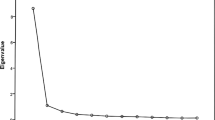Abstract
The purpose of this study was to evaluate the effect of pelvic floor muscle training in women with urinary incontinence after ischemic stroke measured by quality of life (QoL) parameters. Three hundred thirty-nine medical records of stroke patients were searched. Twenty-six subjects were randomised to a Treatment Group or a Control Group in a single blinded, randomised study design. The intervention included 12 weeks of standardised pelvic floor muscle training. The outcome was measured by the Short Form 36 (SF-36) Health Survey Questionnaire and The Incontinence Impact Questionnaire (IIQ). Twenty-four subjects completed the study. The SF-36 and IIQ did not show significant difference between the two groups. Despite the high prevalence of stroke with urinary incontinence, it is difficult to include these patients in such studies. The samples were too small to detect any significant differences. Development of specific instruments for QoL in stroke patients with urinary incontinence can be recommended.

Similar content being viewed by others
References
Abrams P, Blaivas JG, Stanton SL, Andersen JT (1990) The Standardisation of terminology of lower urinary tract function recommended by the International Continence Society. Int Urogynecol J 1:45–58
WHO Task Force on Stroke and other cerebrovascular Disorders (1989) Stroke 1989: recommendation on stroke prevention, diagnosis and therapy. Stroke 20:1407–1431
Brittain KR, Peer SM, Castleden CM (1998) Stroke and incontinence. Stroke 29:524–528
Lindenstrøm E, Boysen G, Nyboe J, Appleyard M (1992) Stroke incidence in Copenhagen, 1976–1988. Stroke 23:28–32
Grimby A, Milsom I, Molander U, Wiklund I, Ekelund P (1993) The influence of urinary of incontinence on the quality of life of elderly women. Age Ageing 22:82–89
Noelker LS (1987) Incontinence in elderly cared for by family. The Gerontologist 22:194–200
Kelleher C, Khullhar V, Cardozo L (1993) The impact of urinary incontinence on quality of life. Neurourol Urodyn 12:388–389
Hermann N, Black SE, Lawrence J, Szekely C, Szalai JP (1998) The Sunnybroock Stroke Study. A prospective study of depressive symptoms and functional outcome. Stroke 29:618–624
Wilkinson PR, Wolfe CDA, Varburton FG, et al (1997) A long term follow-up of stroke patients. Stroke 28:507–512
Kegel AH (1948) Progressive resistance exercise in the functional restoration of the pelvic floor muscles. Am J Obstet Gynecol 56:238–248
Bø K (1990) Pelvic floor muscle exercise for the treatment of female stress urinary incontinence. Methodological studies and clinical results. Doctorial thesis, The Norwegian University of Sport and Physical education
Nygaard IE, Kreder KJ, Lepic MM, Fountain KA, Romberg AT (1996) Efficacy of pelvic floor muscle exercises in women with stress, urge and mixed urinary incontinence. Am J Obstet Gynecol 174:120–125
Olsen TS (1991) Rehabilitering af apopleksiramte. Uf L 153:1840–1843
Groat WC (1997) A neuralgic basis for the overactive bladder. Urology 50[Suppl 6A]: 36–52
Middaugh SJ, Whitehead WE, Burgio KL, Engel BT (1989) Biofeedback in treatment of urinary incontinence in stroke patients. Biofeedback and Self-regulation 14:3–19
Folstein MF, Folstein SE, McHugh PR (1976) “Mini-Mental State” a practical method for grading the cognitive state of the patients for the clinicians. Psychol Med 6:551–563
Ware JE, Sherbourne CD (1992) The MOS 36-items from health survey (SF-36). I Conceptual framework and item selection. Medical Care 30:472–483
Garrat AM, Ruta DA, Abdalla MI, Buckingham JK, Russel IT (1993) The SF-36 health survey questionnaire: an outcome measurement suite for routine use within the NHS. BMJ 306:1440–1444
Anderson C, Laubscer S, Burn R (1996) Validation of the Short Form 36 (SF-36) health survey questionnaire among stroke patients. Stroke 27:1812–1816
Shumaker SA, Wyman JF, Uebersax JS, McClish D, Fantl JA (1994) Health related quality of life measures for women with urinary incontinence: The Incontinence Impact Questionnaire and the Urogenital Distress Inventory. Qual life Res 3:291–306
de Haan R, Aaronson N, Limburg M, Langton Hewer R, van Crevel H (1993) Measuring quality of life in stroke. Stroke 24:320–327
Sander P, Thyssen H, Lose G, Andersen JT (2000) Effekten på urinlaekage og livskvalitet af et vaginalt hjaelpemiddel hos kvinder med stress-inkontinens. UfL 152:3038–3041
Lagro-Jansson T, Smit A, Van-Weel-C (1992) Urinary incontinence in women and the effects on their lives. Scan J Prim Health Care 10:211–216
Rasmussen A (2000) Depression after stroke. Doctoral thesis, Copenhagen University, Medicine Faculty
Pickard AS, Johnson JA, Penn A, Lau F Noseworthy T (1999) Replicability of SF-36 summary scores by the SF-12 in stroke patients. Stroke 30:1213–1217
Lubeck DP, Prebil LA, Prebles P, Brown IS (1999) A health related quality of life measure for use in patient with urge urinary incontinence: a validation study. Qual Life Res 1999:337–344
Brown JS, Posner S, Stewart AL (1999) Urge incontinence: new health-related quality of life measures. J am Geriatr Soc 1999:980–988
Acknowledgements
Financial support was provided by the following sources: The Foundation of Danish Physiotherapists Research, The Foundation of 1870, Direktør Jacob Madsen og hustrus Fond. The authors are also very grateful to Inge Sørensen, Eva Holmström and Gun Britt Jarnlo, who all contributed to this work.
Author information
Authors and Affiliations
Corresponding author
Additional information
Editorial Comment: This study uses quality of life parameters to evaluate the effect of pelvic floor muscle training in women with urinary incontinence after ischemic stroke. The authors should be commended on studying this very important group of patients that historically have been difficult to treat. The small study size makes it impossible to draw significant conclusions.
An erratum to this article is available at http://dx.doi.org/10.1007/s00192-007-0497-3.
Rights and permissions
About this article
Cite this article
Tibaek, S., Jensen, R., Lindskov, G. et al. Can quality of life be improved by pelvic floor muscle training in women with urinary incontinence after ischemic stroke? A randomised, controlled and blinded study. Int Urogynecol J 15, 117–123 (2004). https://doi.org/10.1007/s00192-004-1124-1
Received:
Accepted:
Published:
Issue Date:
DOI: https://doi.org/10.1007/s00192-004-1124-1




